Fiber vs. Copper Ethernet Cables: Making the Right Choice for Your Network
Last Updated on March 1, 2024
Copper or fiber: which cable is the right choice for your network? The answer isn't one-size-fits-all. Both copper and fiber optic cables offer valuable benefits for your business. Choosing the right type depends on your specific needs for speed, distance, and security. Let's explore the world of network cabling to see which option will power your business to the next level!
In this blog post, we'll take a deep dive into the world of copper vs. fiber optic cables. We'll break down the differences, advantages, and specific situations where each type shines. By the end, you'll be equipped to make the best decision for your network upgrade, ensuring your business gets the connectivity it deserves.
Ready to learn more? Let's get started!
Table of Contents
Key Takeaways
| Feature | Copper Ethernet | Fiber Optic | Best Choice When… |
|---|---|---|---|
| Speed | Up to 10 Gbps | 10 Gbps + | You need the fastest speeds possible. |
| Distance | Up to 328 feet | Miles | You have long connections or a large campus. |
| Durability | Good | Excellent | Your network is in a harsh environment. |
| Security | Fair | Very Good | Data security is your top priority. |
| Cost | Lower | Higher | You're on a budget or have short cable runs. |
What are Fiber Optic Cables?
Unlike traditional copper ethernet cables that transmit data using electrical signals, fiber optic cables harness the power of light. These cables contain incredibly thin strands of glass or plastic fibers (about the thickness of a human hair!) that carry data in the form of light pulses. This light-based transmission offers some major advantages, which we'll explore in the next section.
Think of it like this: copper cables are like sending information through a standard copper wire, while fiber optic cables are more like sending it through a high-speed laser beam!
Types of Fiber Optic Cables
There are two main types of fiber optic cables:
- Single-mode: Uses a single ray of light for long-distance transmission, ideal for connecting buildings or spanning vast distances.
- Multi-mode: Uses multiple rays of light for shorter distances within a building or campus, offering more flexibility but less distance range than single-mode.
Advantages of Fiber Optic Cables over Copper Cables
Fiber optic cables hold several significant advantages over traditional copper ethernet cables:
- Blazing Speed: Fiber optic cables are your top choice for lightning-fast data transmission. They easily handle 10 Gbps and beyond speeds, making them perfect for demanding applications like video streaming, large file transfers, and data center connectivity.
- Long-Distance Champs: When it comes to distance, fiber optics reign supreme. Signals can travel miles without significant weakening, unlike copper ethernet, which starts to experience degradation after about 328 feet (100 meters). This makes fiber ideal for connecting buildings, sprawling campuses, or networks across large facilities.
- Built Tough: Fiber optic cables are incredibly durable. They resist electromagnetic interference (EMI) from noisy electrical equipment or power lines, making them a reliable choice for harsh environments. Plus, they are less corrosion-resistant, making them suitable for a wider range of applications.
- Security Boost: Because fiber optic cables transmit light rather than electrical signals, they're inherently more difficult to tap into. This provides an extra layer of security for businesses handling sensitive data.
Speed Comparison Table
| Cable Type | Typical Maximum Speed | Maximum Distance (without signal degradation) |
|---|---|---|
| Cat5e Ethernet | 1 Gbps | 100 meters (328 feet) |
| Cat6 Ethernet | 10 Gbps | 55 meters (180 feet) for 10 Gbps speeds |
| Cat6a Ethernet | 10 Gbps | 100 meters (328 feet) |
| Single-mode Fiber | 10 Gbps + | Over 40 km (25 miles) |
| Multi-mode Fiber | 10 Gbps + | Up to 550 meters (1800 feet)* |
Disadvantages of Fiber Optic Cables over Copper Cables
While fiber optics boast numerous benefits, it's crucial to consider their potential drawbacks before upgrading your network.
- Cost: One of the primary drawbacks of fiber optic cables is that they generally have a higher upfront cost than copper ethernet cables. This extends to the installation costs, which might be higher due to the specialized equipment and expertise required.
- Complexity: Installation and termination of fiber optic cables often require greater technical skill and specialized tools than copper cables. This is where professional service providers like iFeelTech come in, ensuring proper installation and minimizing potential issues.
- No Power Delivery: Fiber optic cables don't transmit electricity, unlike copper ethernet cables, which can carry power for PoE (Power over Ethernet) devices like IP cameras or wireless access points. You must plan for separate power sources if you rely on PoE devices.
When to Use Fiber Optic Cables
While copper ethernet cables still serve many purposes, there are specific scenarios where the benefits of fiber optic cables make them the clear winner:
- High-Bandwidth Applications: Fiber optics are your best bet when you require lightning-fast data transmission speeds (think 10 Gbps or higher).
- Long-Distance Connections: If you need to connect buildings across a campus, link networks across different locations, or cover significant distances within a large facility, fiber optic cables are essential.
- Harsh Environments: When your network might be exposed to electromagnetic interference (EMI), extreme temperatures, or corrosive elements, fiber optic cables offer superior durability and signal integrity compared to copper.
- Top-Notch Security: Businesses handling sensitive data that need an extra layer of protection can benefit from the inherent resistance of fiber optic cables to interception or tapping.
- Future-Proofing: As your business grows and your network needs to expand, fiber optic cables provide the scalability to accommodate increasing bandwidth demands and future technologies.
When Copper Ethernet Works Well (and When It Doesn't)
Cat6 Ethernet cables are an excellent choice for many small and medium-sized businesses. They offer reliable speeds, easy installation, and support power over Ethernet (PoE) for devices like IP cameras and phones. This setup is ideal for contained networks where all devices are within 328 feet (100 meters) of your main network switch.
However, there are situations where copper Ethernet falls short:
Long Distances
When connecting buildings, sprawling facilities, or remote devices beyond 328 feet, signal degradation becomes a major issue with copper cables. This is where fiber optic cables truly shine.
Expanding Networks
Investing in a fiber backbone can save you headaches if you need to connect additional buildings or extend your network's reach.
Real-World Example
We recently worked with a client setting up a large property in Homestead. With distances exceeding 300 feet and needing to power IP cameras, we opted for a hybrid solution. We deployed fiber optic cables to connect multiple remote network switches, ensuring reliable connectivity and power for the cameras across the entire property.
Additionally, we always recommend running a backup fiber line for redundancy – it's a lifesaver if the primary line gets damaged.
Conclusion
The world of network cabling offers choices, each with its strengths and ideal applications. Copper ethernet cables remain a solid and cost-effective solution for many networks. However, fiber optic cables offer undeniable advantages in speed, distance, durability, and security, which can significantly benefit specific business needs.
If you're considering a network upgrade, iFeelTech is here to help! Our expert technicians can assess your current network infrastructure, discuss your goals, and provide tailored recommendations, ensuring you get the best connectivity solution for your business.
Contact us today for a complimentary network assessment and discover how fiber optics (or the right copper solution) can take your business network to the next level!
What is the main difference between fiber optic and copper cables?
The key difference lies in how they transmit data. Copper cables, like Cat5e or Cat6, use electrical signals, while fiber optic cables use light pulses traveling through thin glass or plastic fibers at the speed of light.
I need to upgrade my network. How do I choose between copper and fiber?
Consider these factors:
– Speed: Do you need to support high-bandwidth applications (10 gigabits per second or above)? Fiber is your best bet for blazing-fast data transmission.
– Distance: Are you connecting buildings, spanning large facilities, or need cables longer than 328 feet? Fiber optics are essential for long distances.
– Security: Is data security a top concern? Fiber offers greater protection against interception compared to copper.
– Cost: While copper is cheaper upfront, fiber might be a better long-term investment, especially if your network is likely to expand.
My runs are short, and I need PoE. Can I stick with Cat6 copper?
Absolutely! For short distances (under 328 feet) and Power over Ethernet (PoE) devices, Cat6 copper ethernet is a great choice. It's cost-effective and reliable for many small and medium-sized business networks.
Are fiber optic cables more fragile than copper?
While the glass fibers inside fiber optic cables are delicate, the cables themselves are robust. They're designed to withstand pulling forces and harsh environments, often outlasting their copper counterparts. Also, unlike copper, they aren't a fire hazard.
What are single-mode and multi-mode fiber optic cables?
– Single-mode: Uses a single light ray for ultra-long distances, ideal for connecting distant buildings or data centers.
– Multi-mode: Uses multiple light rays for shorter distances within buildings or campuses, offering flexibility but less range than single-mode.
Im worried about electromagnetic interference (EMI). Is fiber a better choice?
Yes! Fiber optic cables are immune to EMI, making them reliable for environments with electrical equipment or power lines that can disrupt copper network signals.
Glossary
- Cat5e/Cat6/Cat6a: Categories of copper Ethernet cables with varying speeds and capabilities.
- Electromagnetic Interference (EMI): Electrical noise that can disrupt data signals in copper cables.
- Fiber Optic Cable: A cable containing thin glass or plastic fibers that transmit data using light.
- Gbps: Gigabits per second, a measure of data transmission speed.
- Multi-mode Fiber: Fiber optic cable using multiple rays of light for shorter distances.
- PoE (Power over Ethernet): Technology that allows power and data to be carried over a single Ethernet cable.
- Single-mode Fiber: Fiber optic cable uses a single light ray for long distances.

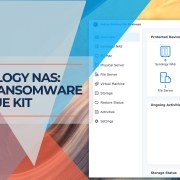
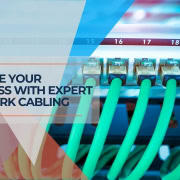


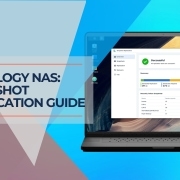
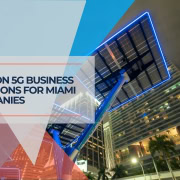

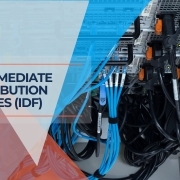


Leave a Reply
Want to join the discussion?Feel free to contribute!